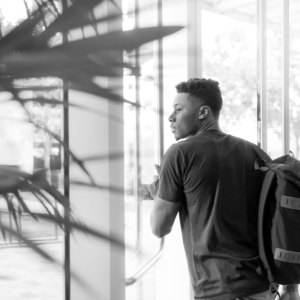Associated Materials
Affordability and Financial Aid in College
Highlights
- One of the biggest considerations for many students making the complex decision whether (and where) to attend college is affordability.
- Students leave nearly $4 billion in federal grants unused each year, struggle to navigate borrowing decisions, and underutilize other forms of aid as well.
- Designing effective financial aid programs requires understanding and creatively addressing the barriers that impede access and utilization.
The challenge
College graduates earn almost twice as much as those with only a high school diploma over the course of their lifetime and are significantly more likely to be employed. But less than half of low-income high school seniors who intend to go to college end up enrolling. One of the biggest considerations for many students making the complex decision whether (and where) to attend college is affordability. To make college more affordable, American students can access federal financial aid and need-based grants. Yet, in recent years, students around the country have left nearly $4 billion in federal grants unused, simply because they did not apply for them.
Unfortunately, research has shown that students who don’t tap into financial aid opportunities are less likely to enroll in college and less likely to graduate. For those who successfully apply for student loans, it can be difficult to know how much to borrow: some students may borrow more than they need, making repayment more onerous later on, while others may not borrow enough, turning to more costly methods of paying for education or dropping out before graduation. And even once students have navigated the hassles involved in securing sufficient funding, they must continue to make smart decisions about how to manage their money throughout the year.
Our approach
For over a decade, ideas42’s Postsecondary Education team has been working to identify the behavioral barriers impeding student success, and to design and implement interventions to address those challenges. As part of this effort, we have used insights from behavioral science to research, design, implement, and test interventions aimed specifically at helping more students access needed financial aid, navigate borrowing decisions, and manage financial concerns as they complete their education.
For example, we found that timely reminders about critical, but often overlooked, deadlines for financial aid filing can lead to significant increases in the amount of aid students receive:
- We partnered with the Finance Authority of Maine to identify common behavioral barriers high school seniors face when it comes to filing the FAFSA and provided design recommendations for addressing those challenges.
- We collaborated with Stanford researchers to prompt high school students from the San Jose Unified School District in California to file the FAFSA, increasing filing rates and financial aid awards.
- We partnered with Arizona State University to help more students renew the FAFSA by the priority deadline with a behaviorally informed email campaign.
We discovered that changing the manner in which students are presented with loan offers can both increase borrowing and improve academic outcomes:
- We created a texting campaign designed to facilitate personalized decisions around financial aid for students at the Community College of Baltimore County in Maryland
- We collaborated with researchers from the University of Maryland and the University of Illinois to explore how award letters influence borrowing decisions.
And we explored how targeted behavioral interventions can help students manage their financial health:
- We researched challenges to financial well-being for students at Valencia College and developed a goal-setting and plan-making exercise to reduce financial stress, as well as a targeted email campaign to encourage selecting courses that are eligible for financial aid during course registration.
- We identified five high-potential opportunities to support students’ financial health on the journey to, through, and after college, summarized in our paper College Student Financial Health and Behavioral Science.
Takeaway
Paying for college is a big part of the student journey and a major concern for many students and their families. By using insights from behavioral science to understand what prevents students from accessing available financial resources, as well as the challenges in navigating complex financial decisions, we can help schools and policy makers better design aid programs that meet students needs. When we mitigate financial concerns, we create space for students to focus on being a student.
Follow @ideas42 on Twitter to learn more about our work. Contact us at education@ideas42.org with questions.









